Calathea crokata (saffron): description and care at home

Calathea crocata is a fairly popular house plant, the green beauty is also called saffron. An elegant perennial is not particularly whimsical, so keeping it at home will not be difficult even for those who are taking their first steps in floriculture. The main thing is to know the nuances of care and comply with certain conditions of detention. But it is also very important to know everything about possible plant diseases and their symptoms. All this will allow you to admire the beauty and health of a green pet for many years.
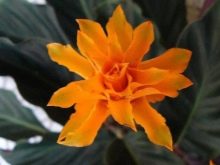
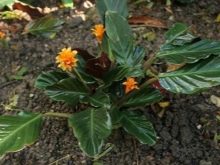
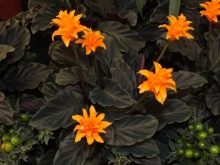
Peculiarities
Calathea crocata (saffron) is a very graceful flower belonging to the arrowroot family. This representative of the flora comes from the South American continent. Tropical origin in no way prevents kalatea from flourishing in the Russian climate, however, only at home.
Distinctive features of calathea:
- the leaves are large, in the form of an oval or ellipse, their color is very rich and bright - green with a shade of purple;
- flowering resembles panicles in appearance, the color is orange, yellow, juicy;
- peduncles are very long, stand out from the foliage.
The color of the foliage can vary depending on the organization of lighting and the quality of feeding, timely transplantation.
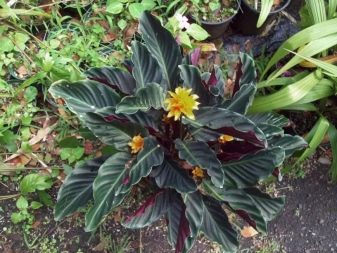
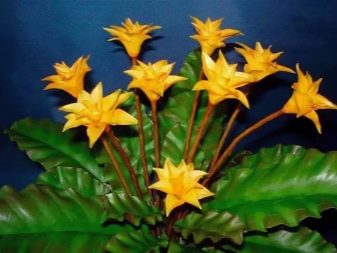
Conditions of detention
Despite the fact that Calathea saffron is considered very unpretentious, you must follow the basic rules of caring for it. Only in this case, you can expect healthy development and high-quality flowering. First of all, take care of the lighting, as this representative of the flora needs a lot of light. The brightness of the light should be combined with diffusion; direct rays are contraindicated for it in the same way as dimming. The best solution would be to place Calathea on a window facing east or west.
In winter, it is recommended to use additional light sources, for example, phytolamps, otherwise the flower will not have enough natural light. If these conditions are not met, the foliage will be insufficiently saturated in color, fade, and grind.
In case of exposure to the sun, calathea can get burns and acquire a brown tint.
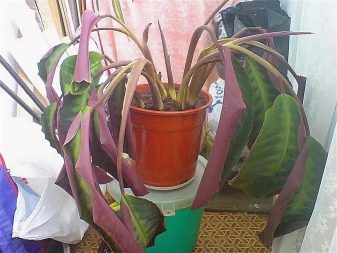
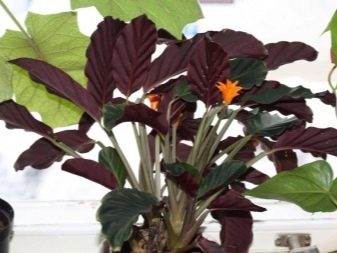
As for the temperature regime, in this regard, the plant is quite unpretentious. It is enough to provide him with a comfortable mode without sudden changes. In winter, +19.22 is enough for him, on a summer day it is allowed to keep a container with a plant on the veranda, balcony. In the evening, the pot is brought into the house in the usual conditions of stay. The only thing that Calathea does not tolerate is a draft; it can die from the effects of the cool wind. The maximum temperature tolerated by the flower is +27, the minimum is +18. It is advisable to save the plant from sudden jumps.
Another important nuance is air humidity. Perhaps this is the most difficult parameter, the observance of which can be difficult. The room must be very humid, a hygrometer is required, the indicators of which should not fall below 65 percent. This is especially difficult to achieve in winter conditions, when heating devices dry the air.
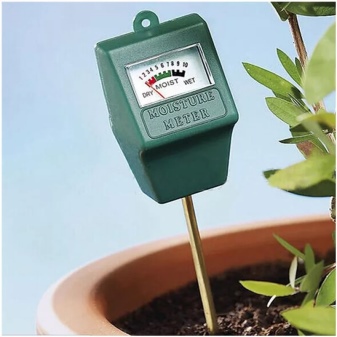
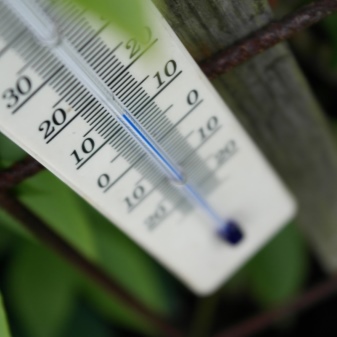
Florists recommend adhering to the following rules:
- install containers with water, wet pebbles or expanded clay in the immediate vicinity of the flower;
- use air humidifiers, install decorative fountains in the room;
- cover the batteries with a wet cloth during heating.
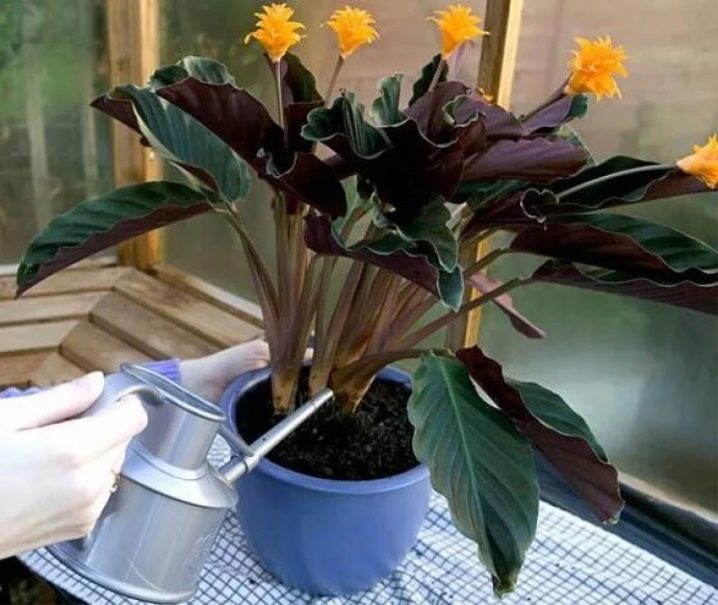
Transfer
After purchase, the plant can be transplanted immediately, but it is better to give it a few days to adapt.Calathea is transplanted in the midst of spring, the optimal month is April. A growing young flower is subjected to this procedure every year. It is enough to replant a mature plant every 3 years. The algorithm for transplanting is as follows:
- use clay or plastic pots;
- the soil can be prepared independently or purchased ready-made;
- a drainage layer at the bottom is required; expanded clay, broken brick, foam plastic, pebbles can be used as a material;
- the root system requires careful handling during the transplantation process;
- if the rhizomes are intertwined, they are washed with warm water;
- if not, the roots are not cleared of the ground, they are moved directly with a lump, and the remaining space is filled up with soil.
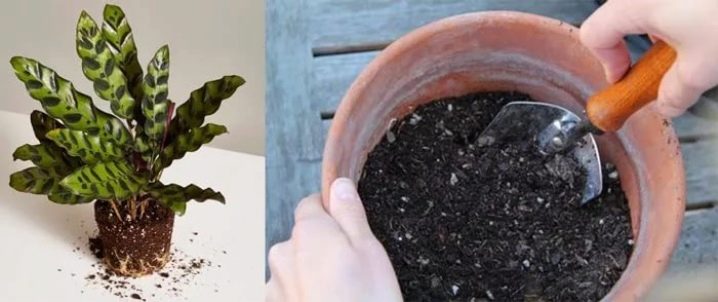
How to care?
To grow a beautiful and healthy saffron calathea at home, it is imperative to organize competent care. It's pretty simple and easy to do at home.
Watering
Calathea loves moisture, so soil moisture should be abundant, carefully monitor the condition of the soil, the top layer should not dry out. In the fall, watering is gradually reduced, but the soil cannot be completely allowed to dry out. You need to water the flower with water at room temperature, which has settled well. In addition to watering, arrange the following water treatments:
- spraying with warm water 2 times a week;
- periodically - a warm shower, during which you need to cover the soil with plastic.
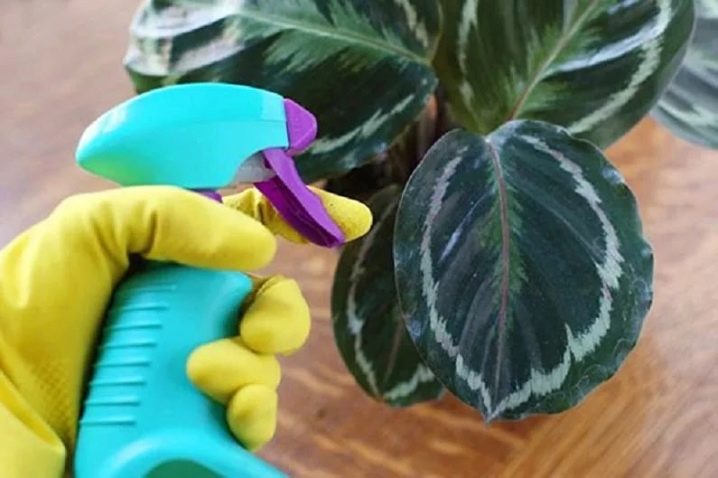
Top dressing
From May until the end of summer, the plant must be fertilized regularly. Top dressing is carried out with a complex type liquid agent, adding it to water for irrigation twice a month. The composition must not come into contact with leaves or stems, otherwise burns may occur. Overfeeding is not recommended, since an excess of nutrients negatively affects the development of the plant.

Reproduction
The breeding process of this plant is quite simple. You can do this yourself in any of the following ways.
Cuttings:
- choose strong lateral processes, cut off the part with foliage with a knife;
- place in a container with a growth stimulator;
- then transplant into soil - loose, moist, with drainage;
- ideal substrate - with peat and sand;
- cover with foil, periodically give air access, water.
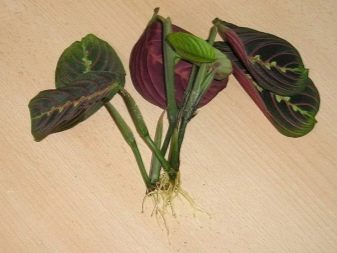

By dividing the bush:
- it is optimal to do this when transplanting a mature plant;
- divide the bush so that each part has both roots and a rosette of foliage;
- transplant the delenki in a container with soil mixture;
- the composition of the soil - in equal parts peat, sand, leaf earth;
- you can add pine bark, charcoal, perlite;
- water on time, maintain the temperature regime in the region of +21 degrees Celsius.
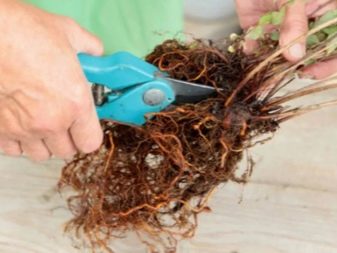
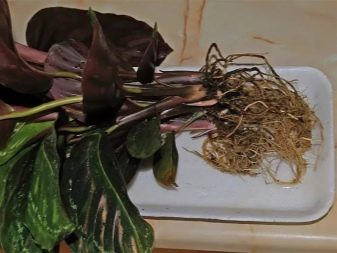
Seed reproduction:
- sow seeds into a container with wet soil;
- they should not be deepened;
- cover with plastic and put in a place with enough natural or artificial light;
- after the sprouts appear, sprinkle them with soil, do not forget to moisturize;
- start hardening future plants by periodically opening the film;
- after the first leaves appear, dive the sprouts into different containers.
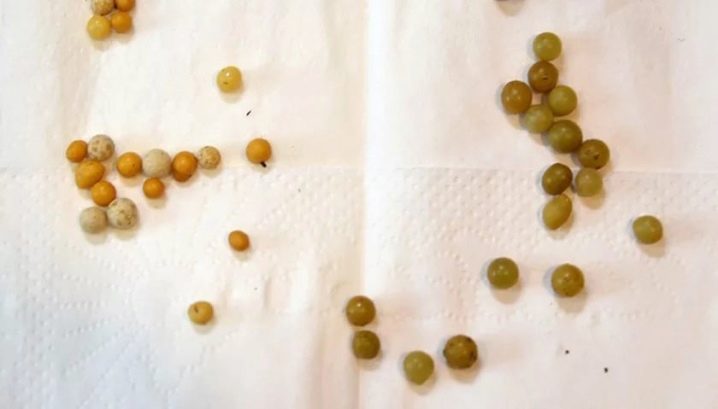
Diseases and pests
Diseases of Calathea are quite rare, they most often occur due to improper care: drafts, sudden temperature jumps, dry air. The most common problem with a flower is that its leaves are drying out. There may be several reasons. For example, the air is too dry - if the plant does not have enough moisture, it begins to dry out. The problem is solved with a humidifier or daily spraying. And also poor-quality water, sunburn negatively affects the state of the leaves. That's why use only settled water, and provide diffused lighting.
Leaves may not only dry, but curl, which is also a common problem. Do not confuse painful curls with natural curls at night. Consider if your plant has encountered the following factors:
- insufficient watering, drought;
- cold or unsteady water for irrigation;
- excess soil moisture and, as a result, root rot;
- cold temperature, draft.
Any of these factors could affect the plant negatively and cause this problem.
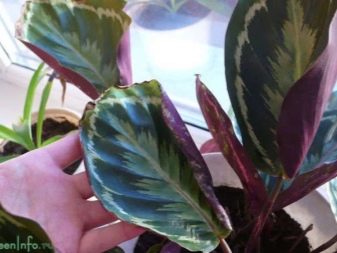
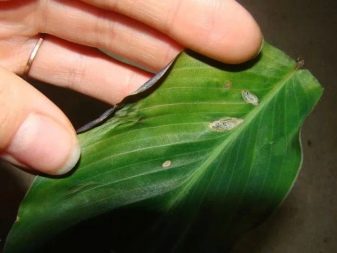
If the leaves not only dry, but also turn yellow, you may have overfed him too much or, on the contrary, forgot about fertilizers. Be sure to observe the regularity of feeding, reduce it in winter to once every one and a half months. You may be using too much of a substance.

Another problem that may arise for flower growers with calathea is the lack of flowering. It is possible that you have chosen the wrong soil. Calathea feels best in a slightly acidic substrate, so select the appropriate composition. And also the plant does not bloom if the rules of care are violated: not enough moisture, fertilizers, little heat.
The most serious problem when caring for calathea is insect attacks. Most often, this plant is populated by:
- scabbards;
- thrips;
- spider mites.

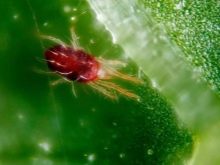
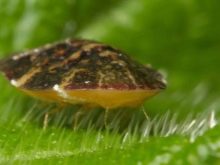
If the flower is sick, it is necessary to find out if it has been attacked by pests, so carefully look at the foliage, it may be: cobweb, plaque, sticky to the touch, light-colored dots, brown bubbles. Searching for the parasites themselves is useless - they are very small. Whatever pest attacks the plant, it must be placed separately from others, otherwise the parasites will damage those nearby. Be sure to process the place where the flower was, then start treatment.
Insects love dry air and do not tolerate moisture, this must be remembered both in terms of prevention and getting rid of pests. It is necessary to maximize the level of humidity in the air, rinse the plant with warm water and soapy water. After these procedures, it is necessary to treat the calathea with insecticides.
See below for tips on caring for the plant.





























The comment was sent successfully.